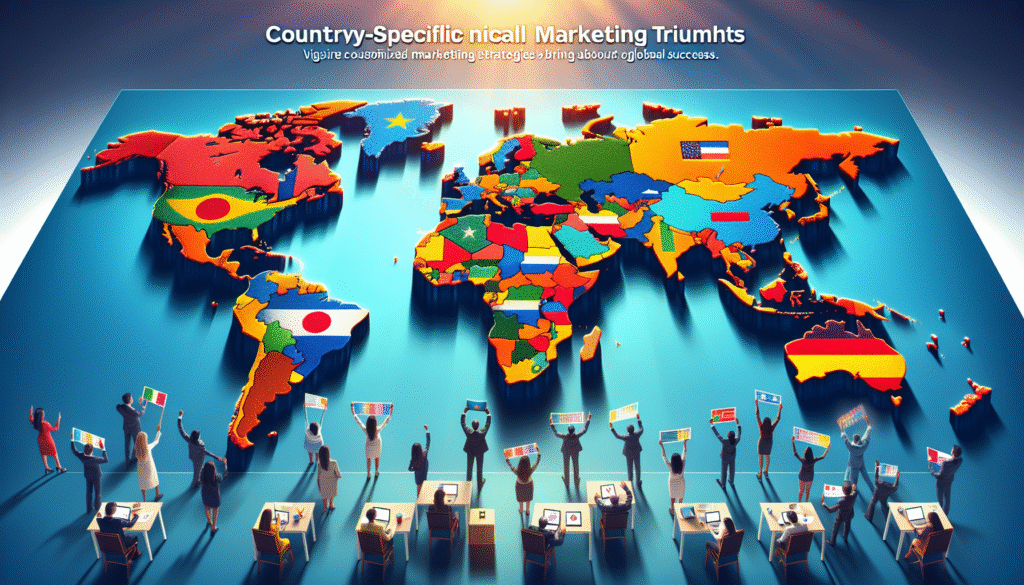Have you ever noticed how some products or services seem to do remarkably well in certain countries while merely finding their footing globally? It’s like when we find that local ice cream flavor that trumps the universal vanilla every time. As we delve into the fascinating world of country-specific offers that have outshined their global counterparts, we hope to provide you with insight that’s as engaging as it is informative. Let’s unfold this journey to see why the “local flavor” sometimes beats even the most robust global campaign.

Understanding The Concept of Country-Specific Offers
Country-specific offers are tailored promotions designed to cater uniquely to the cultural, economic, and consumer behaviors prevalent in specific regions. Unlike one-size-fits-all global offers, these are finely tuned to resonate with local audiences on a deeper level.
Why Do Country-Specific Offers Outperform Global Ones?
Cultural nuances, language preferences, economic conditions, and unique consumer behaviors all play significant roles in how an offer is received. When we look at it more closely, tailoring an offering to align with a region’s distinct characteristics can significantly boost its acceptance and success rate.
-
Cultural Relevance: Sometimes, what makes sense globally might not hit the mark locally due to cultural discrepancies. For instance, try selling snow gear in a tropical region—no amount of global marketing prowess will help.
-
Economic Sensitivity: Offers that align with a country’s economic reality can outperform those that don’t. What’s affordable in one nation might not be in another, and adjusting prices or offering flexible payment options can make all the difference.
-
Local Preferences and Trends: Fashion trends, taste preferences, and even buying behavior can differ vastly from one region to another. Understanding these nuances can help brands tailor products or services to deliver what the local audience truly desires.
Examples of Country-Specific Offers That Outperformed
Here are some examples where country-specific offers have truly outshone their standard global versions:
1. McDonald’s Regional Menus
Perhaps one of the most famous examples is McDonald’s approach to its menu. While the Big Mac exists internationally, McDonald’s has designed unique menu items catering to local tastes in different countries.
| Country | Special Offer |
|---|---|
| India | McAloo Tikki Burger |
| Japan | Teriyaki McBurger |
| Italy | Panzerotti |
| Canada | McLobster (seasonal) |
Each of these offerings leverages local culinary traditions, thereby attracting consumers who might otherwise skip the standard offerings. The result is a menu that isn’t just tolerated—it’s loved.
2. Netflix’s Localized Content
Netflix has mastered the art of regional content, proving that stories deeply rooted in local culture can captivate audiences far beyond their origin. For instance, the series Lupin from France or Money Heist from Spain have outperformed many globally produced shows.
-
Localized Production: Netflix invests in series and movies made specifically for certain regions, recognizing the universal appeal of engaging storytelling when tied to familiar contexts.
-
Language Options: Offering content in the native language with subtitled options has exponentially increased viewership.
3. Coca-Cola’s “Share a Coke” Campaign
The “Share a Coke” campaign is a stellar example of how a global brand used local elements to its advantage. The campaign replaced the Coca-Cola logo with popular local names in each country.
-
Targeted Personalization: Launching in Australia and then branching worldwide, each region received bottles and cans printed with its most common names, making it feel personal and engaging.
-
A Simple Yet Effective Idea: This campaign saw increased sales wherever it was implemented, proving that small personal touches can significantly enhance consumer engagement.

The Role of Data in Developing Country-Specific Offers
Data-driven insights are crucial in understanding what might work where. Brands rely on a variety of data sources to tailor their offers to local markets effectively.
1. Consumer Analytics
By analyzing consumer behavior trends from purchase data to social media habits, companies can discern patterns and preferences unique to specific regions.
2. Market Research
Surveys, interviews, and focus groups conducted in specific locations can provide deeper insights into what the locals value most in products and services.
3. Competitor Analysis
Studying what similar brands are doing successfully in a specific market can inform an effective strategy for entering or expanding within that country.
Challenges in Implementing Country-Specific Offers
Seamless adaptation to local markets is no easy feat. There are numerous challenges faced when designing such offers.
1. Cost and Complexity
Implementing these offers can be costly and complex due to the need for additional resources, from adapting marketing strategies to modifying products.
2. Maintaining Brand Consistency
While it’s vital to cater to local preferences, it’s equally crucial to maintain a coherent brand image globally. This requires a delicate balance.
3. Regulatory Challenges
Different countries have varying regulations, sometimes making it difficult to introduce a product or service without significant modifications, which can delay launches.
Successful Strategies for Implementing Local Offers
Some strategies have consistently shown to aid the successful implementation of country-specific offers.
1. Building Local Teams
Employing personnel who understand the cultural fabric and consumer preferences within a region helps tailor offers appropriately.
2. Flexibility and Adaptation
Staying nimble and ready to adapt quickly to changing regional trends ensures offerings remain relevant and desirable.
3. Leveraging Local Influencers
Collaborating with local influencers who hold sway in their communities can greatly enhance the appeal and reach of a product or service.
Conclusion
Country-specific offers, when executed thoughtfully, have repeatedly outperformed their global versions by aligning with local tastes, economic conditions, and cultural expectations. Whether it’s about resonating with a region’s unique identity, or simply recognizing the vast diversity of consumer behaviors, these tailored offers demonstrate the immense value in putting local insights front and center. As businesses continue to tread a fine line between global consistency and local resonance, the path to success involves a harmonious blend of both. Who knows, the next big trend could be just around the regional corner!
